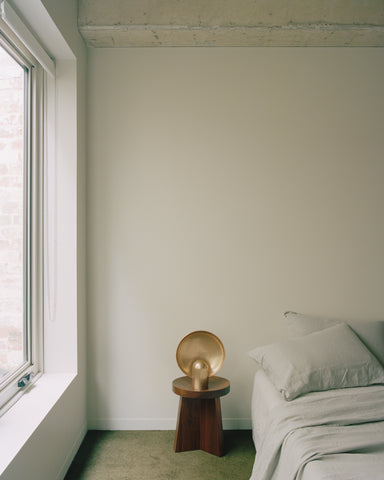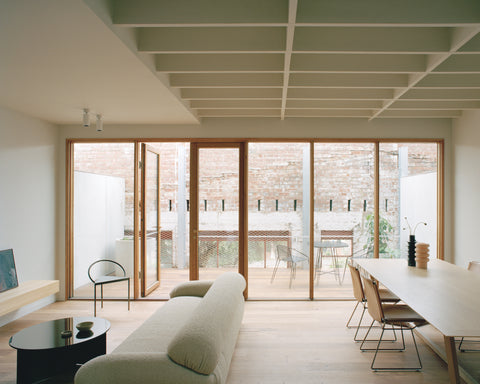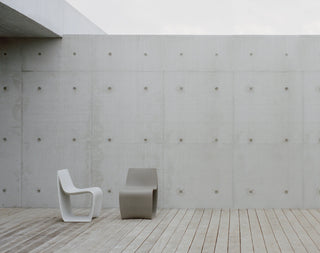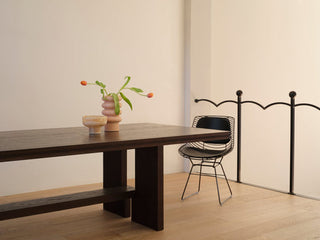In the backstreets of Melbourne’s bustling inner north, 388 Barkly Street – designed by DREAMER in collaboration with Breathe and developed by OUTsideIN – is a low-density multi-residential project underpinned by an ethical approach to design and an interest in biophilic design principles. The project considers its occupants and the surrounding community at every turn – from engaging communal spaces to locally-sourced elements and natural materials. Resultingly, 388 Barkly Street is a veritable sanctuary that exists in pleasing conversation with the densely populated urban environment that surrounds it.
388 Barkly Street is largely defined by the existing red brick warehouse that gives this project its bones; however, DREAMER’s architectural response – guided by both a curiosity in and respect for the existing building – has resulted in a project entirely unique in its character. “The building itself is not heritage listed, but buildings like this make an important contribution to the feeling of Brunswick and its industrial past,” says DREAMER Director Benjamin Shields. After several design iterations, the architects settled on a concept that minimally altered the existing front façade with “a handful of enlargements to existing penetrations,” including lowering windowsills and enlarging the front door. As Benjamin notes, “having been through this process now and seen the result, we would strongly advocate for minimum intervention when working with buildings such as this, as the result for the street and the building has been enriched by retaining so much of the façade.”
Within the brick shell, there are 11 apartments of various form and scale and a large central atrium. While highly beneficial to the result, working within the tight confines of the warehouse proved challenging in the pursuit of natural light, crossflow ventilation and connection to nature. As such, the architects have explored void spaces including light wells, skylights and double-height spaces. “The project is designed around a number of voids at different scales, and the apartment light wells and skylights bring in additional ambient light which is really lovely,” Benjamin offers, adding, “the voids also symbolise the client’s willingness to compromise on saleable floor area for genuine apartment amenity – it’s a testament to their vision and faith in a good architectural outcome.”
These voids were also heavily informed by the architects’ interest in biophilic design principles. The central atrium, which is planted out with native flora and fauna, is a direct response to this. As Benjamin says, “it allows for cross ventilation with operable windows at either ends of the building so the apartments can vent quickly”. It also provides all the dwellings with views to nature – even those set deeper into the plan. A custom bench designed by local studio BMDO sits in the atrium; not only does it encourage a moment of pause but it cleverly catches and directs rainwater. Crafted from stainless steel and cast bronze, the calming sounds it produces gently recall the natural environment.
The team’s environmentally driven approach extends to the interiors, too. There are natural timber floors and island benches in all the apartments, as well as large French doors that open onto terraces. Benjamin says the timber floors and joinery “subconsciously remind people of their connection to nature through natural materials and textures.” Each of the apartments exudes warmth with a consideration for the role of haptics in elevating everyday moments, and the heritage nature of the building plays an important role in this narrative. “The presence of the existing building, which is visible from all living spaces and most bedrooms, provides a constant backdrop and rich brick texture contrasting with the new building insertion,” Benjamin says.
Alongside biophilic design principles and a sophisticated palette of materials, the apartments feature a selection of Fisher & Paykel appliances. As Benjamin says, DREAMER opted to work with the New Zealand-based company for several reasons, the most prominent being the company’s commitment to sustainability. “We felt that Fisher & Paykel had an integrated approach to sustainability and human centred design that aligned with our values,” he shares, adding, “we also liked that their appliances are designed in New Zealand.” It is an accurate outlook, considering Fisher & Paykel’s sustainably minded values and well-designed products which are engineered to last and provide sustainable outcomes by reducing energy and water use, preserving fabric life and decreasing food waste.
Fisher & Paykel also proved fitting for this project due to the company’s design capabilities which allow for effortless integration. Key pieces such as the Integrated French Door Refrigerator Freezer, Double DishDrawer and Rangehood blend seamlessly into the joinery, working with – not against – DREAMER’s minimal design. Conversely, pieces which are expressed in the design, such as the black 60cm Oven with touchscreen guided cooking capability and Induction Cooktop are both sleek and contemporary, complementing the overall aesthetic.
Other bespoke elements imbued with a locally driven mindset appear throughout the project in subtle and surprising ways. Firstly, the folded steel pendants in the kitchens designed by Melbourne-based studio Ambience are both sculptural and functional. As Cathy Moore, Co-Founder of OUTsideIN says, it “subtly guides the eye and body to the central point of the home. It’s a gentle visual cue that invariably brings people together in a way that feels organic and comforting.” Secondly, inspired by Finnish architect Juhani Pallasmaa’s belief that “the door handle is the handshake of the building”, all points of entry are adorned with custom steel handles created by local metalwork studio Rowsaan. These additions are testament to the team’s pursuit for an architecture that prioritises good design and a reflection of their belief that the small, considered elements of a project have a great impact on the whole.
Thoughtful moments that enrich the experience of the everyday are embedded in the design of 388 Barkly Street. Most importantly, as a project that expresses a deep consideration for the qualities that define socially and environmentally responsible housing, it is a hopeful contribution to Brunswick’s colourful built environment.
Article and words by Millie Thwaites from The Local Project Architecture and Interior Design Project Feature.
Featuring products:
MDF Italia Neil leather chairs
Lowe Furniture Atticus table
Lowe Furniture Dish Stools
Bloc Studios Eduard vase
Bloc Studios Ottilie vase
Architecture by DREAMER
Photography by Gavin Green
Build by Koorool Constructions
Interior Design by DREAMER
Styling by Jess Kneebone
Development by OUTsideIN
Architecture and Interior Design by Breathe
Landscape Design by Robert Boden Design
Environmental Consultant by Finding Infinity
Services Engineers by Erbas
Building Surveyor by BSA
Furniture by BMDO
Appliances by Fisher & Paykel
Read the full article here via The Local Project.




